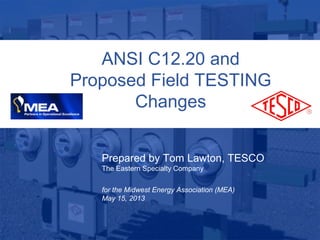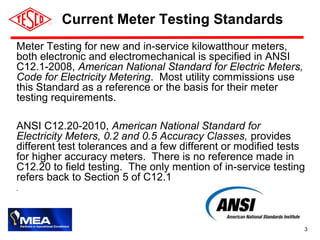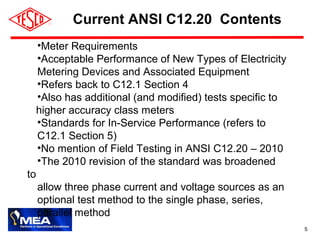The document discusses proposed changes to ANSI standards regarding field testing of electricity meters. It outlines:
1) Planned updates to ANSI C12.1 and C12.20 that will refer to a new ANSI C12.29 standard focused specifically on field testing procedures.
2) The new C12.29 standard is being drafted and will provide best practices for testing meters, instrument transformers, and auxiliary devices in the field.
3) The future of field testing is expected to involve more comprehensive checks of meters and installations beyond just accuracy, including software verification and tamper detection.


















